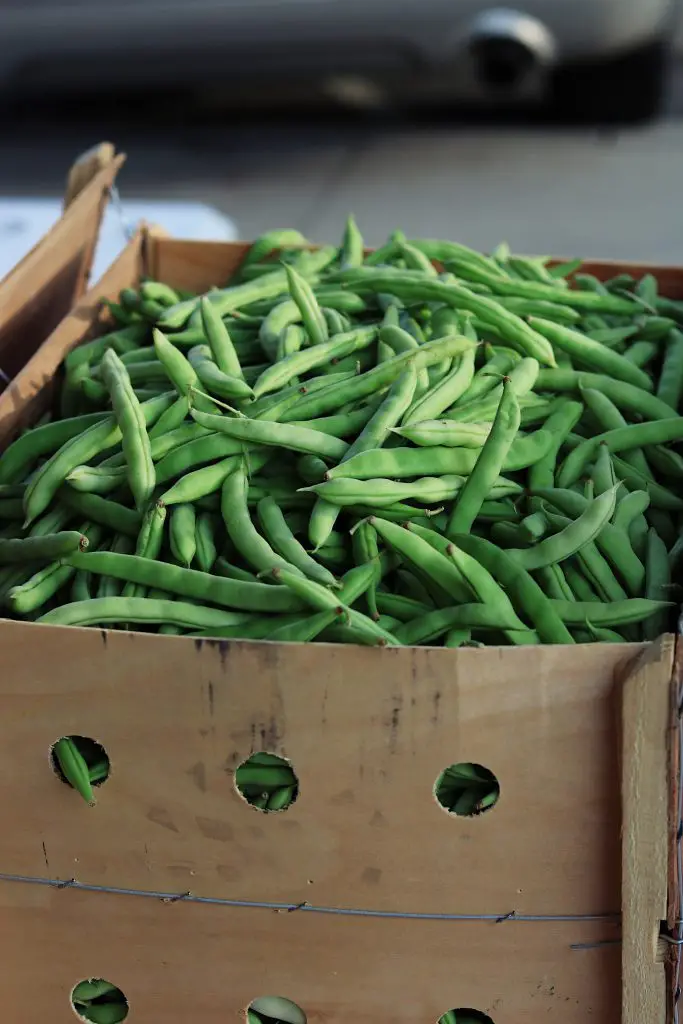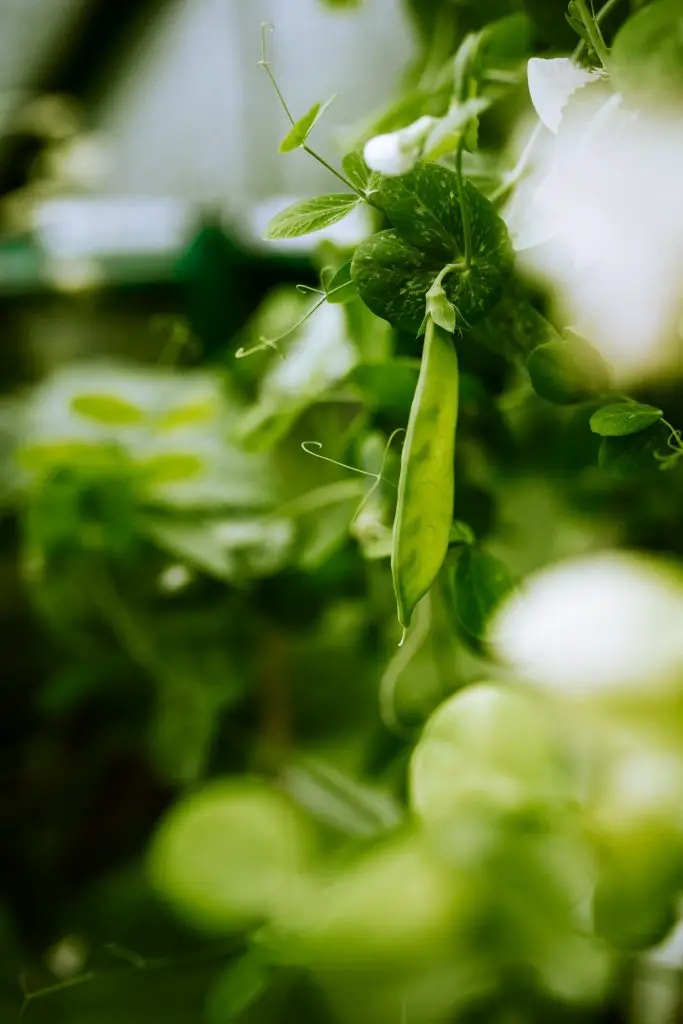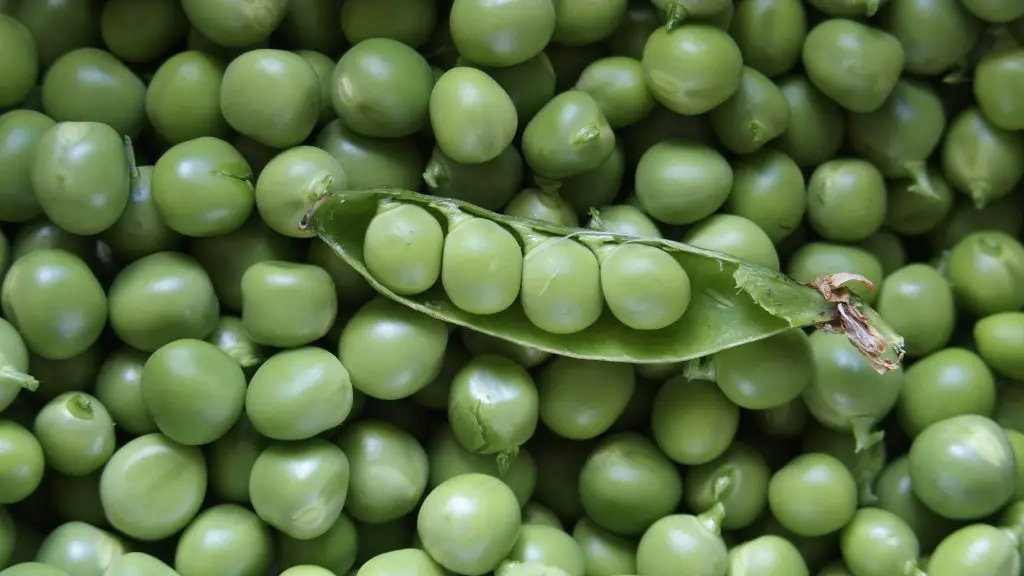What Is The Sweetest Pea To Eat? Peas are one of the most popular vegetables to eat and have long been a staple of the western diet. Peas were widely grown in the UK before the introduction of potatoes as one of the main vegetable crops that people ate, however, these days people are far less reliant upon that vegetable and eat it mainly for it’s flavour. So which pea is the sweetest variety to eat?
The sweetest variety of pea, based on the sugar content detected, was garden sweet which is a variety of peas that produces approximately 20% to 30% more sugar than most other common varieties grown. This particular variety also has the benefit that it is a relatively low growing variety typically only reaching around 3 feet in height which generally makes it easier to grow compared to many other varieties.
However, if you are not a gardener and want the next best thing in terms of flavour than I would consider purchasing frozen peas because they are frozen shortly after the peas have been picked fields.
This is important because the sweetness of peas reduces over time as the sugars present in the pea quickly convert to starch once the pods have been picked in a similar way to what happens with corn. So purchasing fresh peas from a farmer’s market is unlikely to give you as sweet a flavour as frozen peas.
However, like all produce, all frozen peas are not equal. A taste test was carried out by epicurious, on a range of different commercially available frozen peas to see which one was the best. They rated Woodstock Organic Petite Green Peas (available at Mercato.com) as their preferred frozen pea followed by Simply Balanced which is an in-house brand available at Target.

Growing The Sweetest Peas At Home
The variety that is considered to be the sweetest, garden sweet, is not one of the most commonly available commercial varieties and you may have some trouble getting hold of the seeds.
However, there are a number of other varieties that are considered to be well worth growing which are listed in the table below for your benefit.
Of these varieties the one that I personally grow and recommend is Lincoln which is also known as Greenfeast in some countries. This variety is relatively sweet but more importantly, it is a good yielder and has a longer season than many other varieties. If you are considering purchasing seeds try visiting seeds now which have a wide range of peas varieties to choose from to visit the company click on the link.
| Variety | Description | Height | Days To Harvest |
| Alaska Early | Alaska Early is an early variety what produces faster than most other varieties. It produces a 3 to 4 inch pod with 6 to 8 peas per pod. However, it is a hybrid variety which means you cannot collect the seeds | 4 ft | 57 days |
| Canoe | This cultivar produces a pod that is slightly curved and is reminiscent of a canoe. | 3 ft | 70 days |
| Easy Peasy | Easy Peasy produces 3-inch pods after about 60 days. The key advantage of this variety is that the plants are relatively sturdy and generally do not require significant support to grow. | 3 ft | 65 days |
| First 13 | This cultivar produces relatively long pods that contain up to 13 seeds. | 3 to 4 ft | 65 days |
| Green Arrow | The Green Arrow is distinctive because it produces pods that are relatively straight and uniform compared to other varieties. This variety is also known to be relatively disease-resistant. | 3 ft | 65 days |
| Iona | Iona is a hybrid variety developed in France that is known for being relatively sweet and relatively disease-resistant. | 3 ft | 70 days |
| Lincoln | Lincoln is one of the best-known peas is available primarily because it is known for it’s relatively long season compared to other varieties as it has relatively high heat tolerance. It is also highly disease resistant making it a very popular variety. | 3 ft | 70 days |
| Purple Podded | The purple potted variety is an unusual pea variety that produces purple pods however the peas inside are still green. This ornamental variety that looks attractive, produces a fantastic harvest. | 3 ft | 60 days |

How To Grow Peas
Peas are extremely easy plants to grow provided that the conditions are not too hot. Most gardeners plant peas in early spring directly into the garden, however, if you want to get an early start you can also put them into seed trays in late winter and grow them indoors.
When sowing the peas in the garden make a furrow in the garden bed approximately an inch deep and sprinkle the seeds liberally in the furrow and then cover them over with soil. The peas will germinate relatively quickly, usually within 3 to 4 weeks, however, in these early stages, the peas will need a reasonable amount of protection from numerous pests which can include birds and mice.
One of the most common methods that is used to protect these plants early on is to use physical protection such as sharp sticks to stop the birds from accessing the plants.
However, the threat of destruction of these types of plants is only short-lived and the protection can be removed relatively quickly after a few weeks.
In terms of position, peas prefer a location that gets at least 6 to 8 hours of sun per day. In this location, the soil should ideally be rich, moist, and free draining with plenty of organic matter. If the soil is depleted it is advisable to add a bag of compost before planting.

Caring For Pea Plants
Once the plants get to a reasonable height you will need to provide a support structure for most varieties. The method that is traditionally used by gardeners is to use a trellis, however, I find that it is more effective to just use strings and posts. In the method that I follow posts are placed approximately 3 to 4 feet apart along the planting row. As the plants reach a height of approximately 4 inches string can be tied horizontally between the posts on both sides to create a support structure for the young plants.
As the plants increase in height over time additional string layers can be applied to the posts to support plants. This method is more efficient because most peas have tendrils that can cling to the trellis, however, they generally lack the strength the hold the weight when the plants matures. As a result, you end up tying string across the front of the trellis the hold the peas in place anyway. This method does away with the need to use a trellis at all.
Harvesting Peas
Once the peas reach a height of 2 to 4 ft they will begin to start to produce flowers which is shortly followed by pods which will be initially flat. They plump out as they approach the point at which they require harvesting.
Typically, I recommend harvesting the pods when they are slightly thicker than a pencil because at this stage the peas will be a reasonable sized. However, if you are unsure about whether to harvest or not the easiest way is to pick a pod from the plant and have a look inside.
I hope you found this article useful and have great success growing your own peas at home if you have any questions or comments please leave them in the section below.
Relevant Articles
Can You Eat Peas Raw Straight From The Plant? (That Includes Snow Peas)
How Many Peas Will One Plant Produce?
Can You Plant Peas From The Grocery Store?
What Is The Best Fertilizer For Growing Peas?
